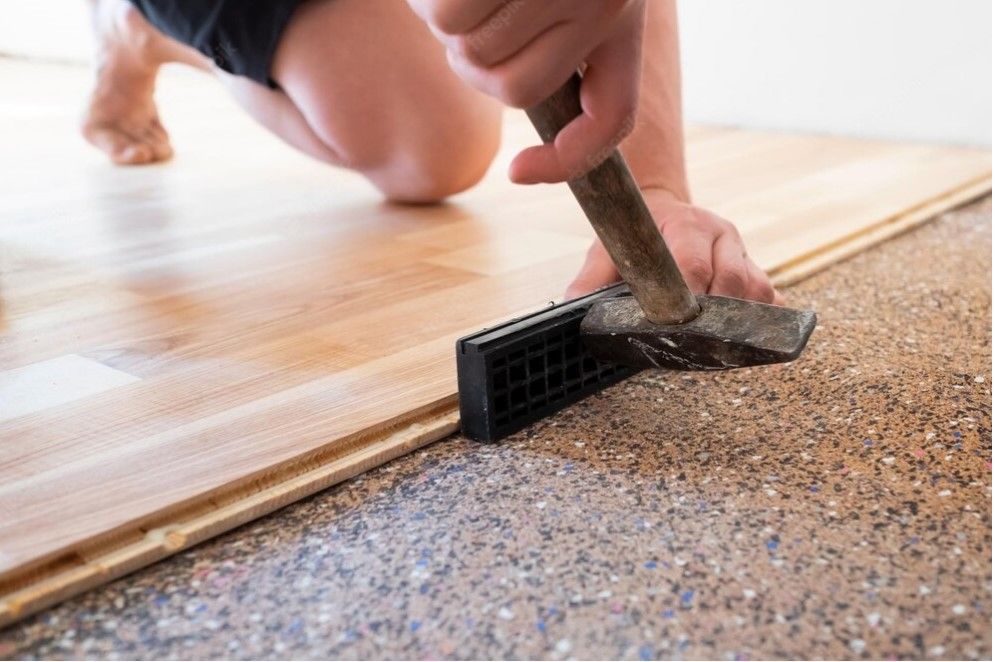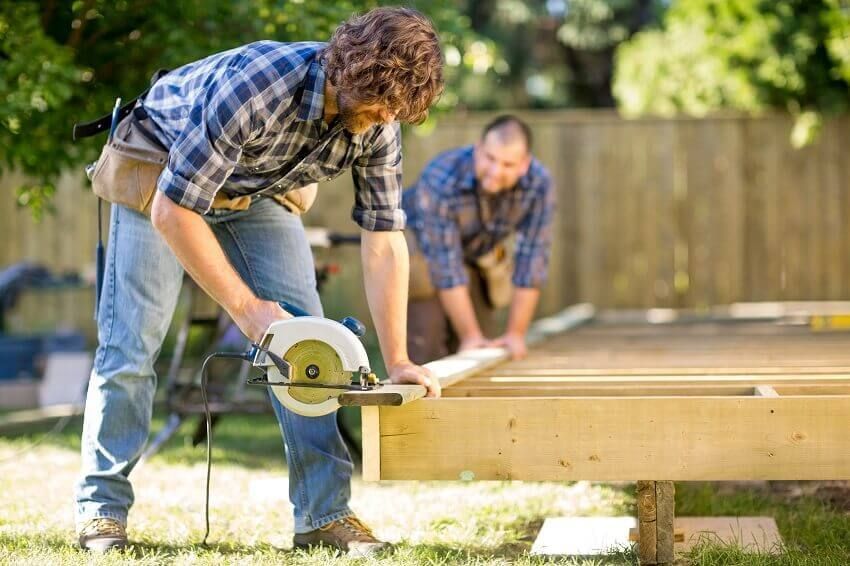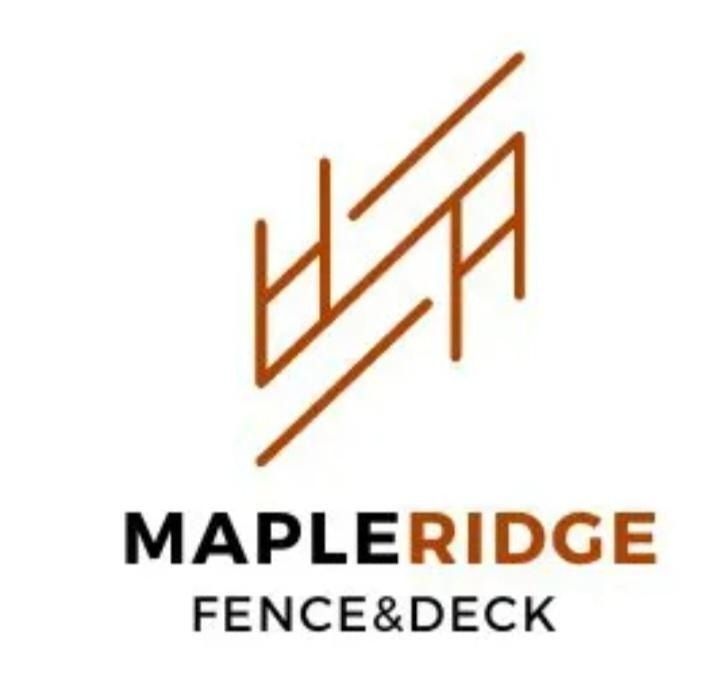Maple Ridge Fence & Deck
Choosing the Right Decking Material: Insights from Deck Experts on Durability and Aesthetics
Step onto your deck and feel the warm sun on your face, hear the laughter of loved ones, and breathe in the scent of summer. The perfect deck is an outdoor space where people make cherished memories. Whether building a brand-new deck or revitalizing an existing one, choosing decking material is paramount. It's a decision that balances durability and aesthetics as you seek a material that can withstand the test of time while exuding beauty.
How do you navigate this choice? Discover the secrets to choosing the perfect decking material from deck experts. Creating an enchanting outdoor space that blends style and durability seamlessly is what matters for a happy home.
Different Decking Materials That Provide Durability and Aesthetic According to Deck Specialists
Selecting the appropriate decking material is undeniably an important choice when constructing a deck. Various situations necessitate different types of decking, such as composite or wood decking. Each option has distinct visual attractiveness, upkeep demands, and other significant factors to consider. Determining the suitable decking material option depends on individual preferences and practical considerations.
Composite Decking
There exists a wide range of composite decking types available. The term "composite" signifies the fusion of different materials to create a final product. Manufacturers utilize a combination of low-density polyethylene (LDPE) and wood fibres. They also incorporate materials such as rice hulls, high-density polyethylene, and various other combinations.
Composite decking
demonstrates resilience against environmental elements. Many composite options emulate the appearance of wood and possess scratch-resistant properties.
Composite decking necessitates minimal maintenance, eliminating the need for sanding or refinishing. An occasional wash a few times per year suffices. With proper care, premium composite materials can endure for up to 25 years.
Composite decking stands out as the superior decking material for several reasons.
- It negates the need for painting or staining, which translates to significant time and cost savings over the long term compared to wood.
- Composite decking boasts enhanced durability compared to wood, exhibiting resistance against rot, insect damage, and weathering. It enjoys a prolonged lifespan and necessitates less maintenance over time.
- Composite decking incorporates recycled materials, making it an environmentally friendly choice.
- It is available in various colours and styles, allowing for customization that complements your home's aesthetics.
Two Types of Composite Decking:
- Capped Composite Decking
Capped composite decking is a variant of composite decking with a resilient plastic coating. This protective plastic layer safeguards the composite decking against moisture and other elements. Compared to uncapped decking, capped decking exhibits superior durability as it is less prone to fading or staining.
- Uncapped Composite Decking
Uncapped composite decking represents another form without a protective plastic layer shielding its core. It is less resilient than capped decking.
Uncapped composite decking is generally not recommended due to its heightened susceptibility to damage from environmental elements, uneven fading, and staining over time. It is particularly vulnerable to mould, mildew, and fungus growth in humid climates. Cracking and crumbling are also potential issues.

Pressure-Treated Wood Decking
Pressure-treated lumber is a prevalent form of wood decking. The chemicals used in pressure-treated wood specifically treat it to deter insects, prevent mould and mildew, and enhance its resistance to rot. It is widely available and easy to cut and work with.
If the appearance of pressure-treated lumber is not to your liking, applying a stain can improve its visual appeal. It is advisable to allow the pressure-treated wood to weather for a few months before staining and consider sanding it beforehand.
When comparing composite decking with wood decking like pressure-treated wood, ordinary lumber tends to split, warp, or crack, and pressure-treated wood requires more maintenance than composite decking. You can prolong the lifespan of a pressure-treated deck by taking proper care, which includes activities such as power washing, sanding, and re-staining.
Cedar Decking
Cedar is a superior wood choice for decks compared to pressure-treated lumber. This natural wood ages gracefully, gradually developing a soft gray hue over time. It is lightweight and easy to work with. Cedar also contains natural tannins that provide resistance against decay, pests, and rot.
For decking, use heartwood rather than sapwood when using cedar. Heartwood, found in the inner part of the tree, is denser and offers greater resistance to decay.
Like pressure-treated wood, cedar decking requires regular maintenance. By selecting high-quality cedar and performing annual refinishing, you can expect your cedar deck to surpass the performance of standard pressure-treated wood decking.
Hardwood
Exotic hardwood is an excellent choice for decking. Hardwood lives up to its name, being exceptionally hard and dense, making it resistant to termites and decay. It also contains tannins that contribute to its durability.
Each hardwood variety has its unique appearance. Due to its density, hardwood has a longer lifespan and develops an attractive patina over time compared to softwoods. It's worth noting that many hardwood species grow slowly, and the sustainability of certain types is a subject of debate.
PVC Decking
This plastic or synthetic decking material comprises cellular polyvinyl chloride (PVC). It is the same material utilized for plastic fencing. It is lightweight and shares a density similar to white pine, a softwood. Certain PVC decking options feature a protective shell, called capping, applied to the surface, providing both protection and a wood-like appearance.
If you prefer a decking material that is lighter and more manageable than wood-composite, PVC decking might be the ideal choice. Similar to wood-composite, PVC decking is resistant to rot and does not require any finishing. Some homeowners are attracted to the aesthetic appeal of PVC, which sets it apart from other decking materials.
Aluminum Decking
Aluminum decking has emerged as a favoured substitute for conventional wood decking. This type of decking offers numerous advantages, including minimal maintenance requirements and exceptional longevity.
Aluminum decking is appealing for homeowners seeking a durable and low-maintenance deck option. It is available in various colours and styles, allowing for customization that matches the exterior of your home.
Its fire-resistant properties make it highly recommended for areas prone to wildfires. Aluminum decking is a suitable alternative for homes in regions characterized by hail storms and strong winds, as it exhibits resilience against weather-related damage.

How to Choose Which Material for Your Deck?
The decision can be overwhelming when faced with selecting the ideal decking material. It is important to evaluate the advantages and disadvantages of each option carefully. You might also want to consider your budget when deciding what materials to choose once you hire a deck specialist to install your deck.
Durability and Longevity
When deciding on the principal material for your deck installer, durability and longevity should be key considerations. Wooden decks are commonly chosen but necessitate regular upkeep and may require replacement after a few years. Composite decking offers greater durability and can withstand the test of time with minimal maintenance.
PVC decking is also highly durable and exhibits resistance to moisture, making it particularly suitable for areas with high humidity or rainy climates. Aluminum decking boasts exceptional durability and has the potential to last for decades.
Sustainability
Prioritizing a material that minimizes your environmental impact can help mitigate the negative consequences of decking production and waste. Recycled plastic or composite decking, which utilizes reclaimed wood fibres and recycled plastic, are excellent choices.
Wood decking can also be sustainable if certified by certain organizations, ensuring responsible management of the wood source from forests. Consider the source of waste wood fibre for the material by assessing its manufacturing process and transportation to ensure it maintains a low carbon footprint.
To further enhance sustainability, proper deck maintenance is essential to extend its lifespan and reduce waste over time.
Maintenance
Consider the upkeep needs associated with different possibilities when choosing the decking material. Wooden decks require regular sealing and staining to prevent rotting, warping, and fading. Composite decks are known for their low-maintenance nature, requiring occasional cleaning to remove dirt and stains. PVC and vinyl decks are remarkably low-maintenance and resistant to moisture, insects, and fading.
Budget
Setting a budget helps you determine the range of options available to you. Decking materials vary in cost, with some options being more affordable while others can be quite expensive.
Wood decking is often considered a budget-friendly choice. These materials are widely available and generally have a lower upfront cost. Composite decking may cost more upfront than wood, but it offers long-term durability and low maintenance, making it a valuable investment.
PVC and aluminum deckings are on the higher end of the price spectrum. They offer exceptional durability and often require minimal maintenance.
Considering your budget allows you to find a decking material that fits your financial limits, desired aesthetic, and performance needs.
Hire Deck Experts for Your Decking Needs
Following the deck experts' advice, you can make a knowledgeable decision for your needs. Whether you select wood, composite, PVC, aluminium, or other materials, it's important to consider the different factors. This can include the longevity, how much maintenance it requires, its sustainability, and your budget.
For top-notch deck services in the
Metro Vancouver Region, hire the team o deck experts in Maple Ridge Fence and Deck. As the best decking company in the area, we understand the significance of seamlessly tailoring your deck to suit your needs and budget. With quality care, we bring your dream deck to life. Discover the difference that Maple Ridge Fence and Deck bring today.
SERVICE AREAS
Maple Ridge, Pitt Meadows, Mission, Langley, Abbotsford, Coquitlam, Chilliwack, Delta, Surrey, Poco, Burnaby, Vancouver, Richmond, North Vancouver, Tsawwassen
Our Services
All Rights Reserved | Maple Ridge Fence & Deck
